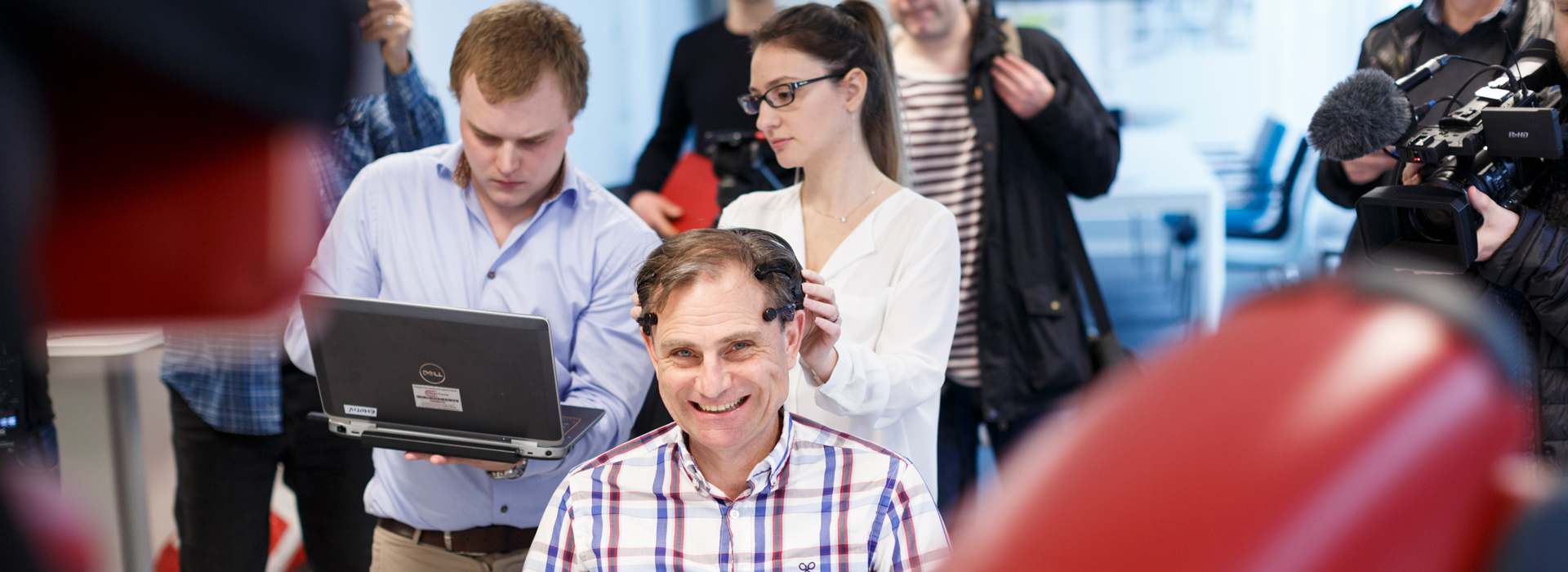Can a robot sense your feelings? Right now 198 works of robot art are competing in a Robot Art Competition in the USA. The winners are selected partly by Facebook likes. A unique contribution to the competition comes from Halmstad University, where the robot Baxter has attempted to interpret human emotions through painting, coached by artists Peter Wahlbeck and Dan Koon.
Usually Baxter lives at the School of Information Technology at Halmstad University, where he is in training to understand and interpret people’s needs and emotions in order to help them feel better. But one day a few weeks ago, Baxter took part in a public event well suited for a social robot. People had gathered on campus to see Baxter try to read, interpret and draw the feelings of well known local artist Peter Wahlbeck, also assisted by artist and author Dan Koon. They have both been part of Baxter’s training by coaching the robot research team in an ongoing master thesis project where the robot is trained to pick up on feelings and express them through painting.
Baxter, who had taken the name ”Rob Boss” fort the art competition, met his audience blindfolded.
“We did it to show that this is not about the robot reading facial expressions or body language. A person can smile without being happy. So we want to take it one step further by getting the robot to sense emotions through brain waves, to understand how a person truly feels,” says Martin Cooney, researcher in social robotics at Halmstad University.
Transferring emotions through brain waves
With a sensor measuring brain waves attached to his head, Peter Wahlbeck proclaimed to be the guinea pig for the event. The emotions he was trying to convey to the robot were decided by chance. And as it turned out, they were to be two extremes – happiness and misery. Peter Wahlbeck produced his happy thoughts by thinking of a hot sunny summer day on the beach. Misery and irritation was evoked by remembering a recent event:
“I thought about something I had ordered online that turned out to not be what I expected, which was very irritating at the time!”
The robot reading Peter Wahlbeck’s emotions painted his impressions with a bright happy yellow and a dark blue and black. Even though the robot chose colours to represent the ”right” emotions, Dan Koon was disappointed after the public event, seeing the robot perform at a more advanced level before.
“Baxter had stage fright today, the robot has done better on other occasions. But we still think that the event has proved what a large potential this research has,” says Dan Koon.
“It is positive that the robot chose the colours matching the emotions, according to the colour scheme we have been using. It makes for a promising future,” says Martin Cooney.
The public event was not the first time Dan Koon and Peter Wahlbeck painted with Baxter – and the images entered in the Robot Art Competition are from those other occasions.
Text: LOTTA ANDERSSON and LOUISE WANDEL
Photo: ANDERS ANDERSSON


